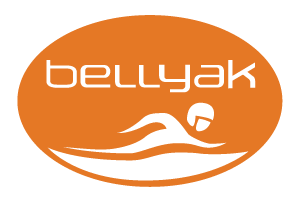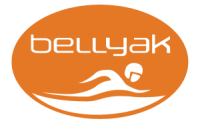Bellyak Early Days, Part II
So, after figuring out that I could cast a plug from an existing kayak…it was on to learning how to glass. åÊMost people know my dad as the leader of Perception Kayaks from 1975-1998, as the man who drove the ship. åÊHowever, he started out just like me…covered in fiberglass, breathing resin fumes, and generally making a mess in the backyard in order to have fun on the weekends. åÊHe taught me how to drape the cloth, mix the resin, and saturate the cloth. åÊI’m stubborn and opinionated, so I would argue with him about how to do it. åÊYou see, I’d read Surfer Steve’s how to on surfboard making and I was an internet armed expert. åÊAnyway, we prevailed, I learned, and we glassed the first boat.
My dad helping me glass the first bellyak at his shop in Travelers Rest SC.
I forgot to mention shaping…shaping the body area was a time consuming guess…I used an angle grinder with a paint removing flap wheel to remove the foam. åÊI made clouds and clouds of foam dust…I got it on everything everywhere.
Anyhow, after glassing the hull…we glassed the deck. åÊWhich was a bit more complicated with all the curves. For you fellow fiberglassers out there, I used 7.5oz glass with polyester resin.
Here’s the finished boat:
There’s åÊan exciting feeling of getting to the put in and floating a prototype for the first time. åÊSo much of the early models are guesses, gut feelings and assumptions…the moment of truth comes when you push off from shore and start downriver. åÊSometimes it’s great…other times the boat only gets paddled once. åÊThis particular boat, Phat #1, only got paddled a few times.
Here’s what I learned:
-Extra length gives good speed and glide…since you’re paddling with hand paddles this is really important.
-Phat had too much rocker…and thus too much “pushing” through the water.
-Extra Rocker made turning really easy.
-Body cavity filled with water, and made boat hard to paddle.
-Displacement hull was less stable for moving around on than the planing hull of the original 3-d.
These were all valuable things to learn…and have led to the development of a bellyak specific rocker profile, drains, and ergonomic contoured body cavity.
Anyway, this first “real” prototype whetted my appetite to continue on with this method…on to my next boats.



